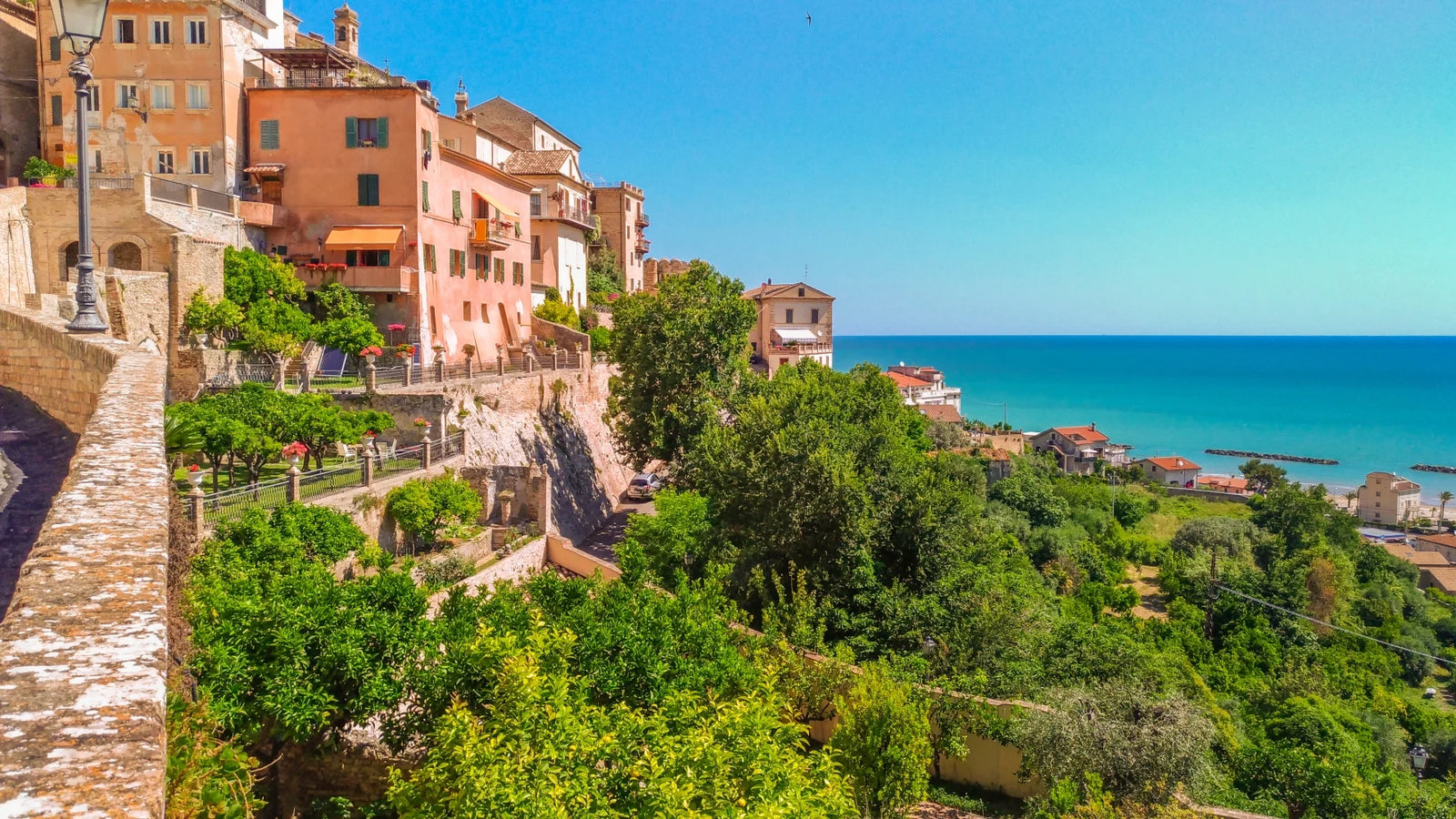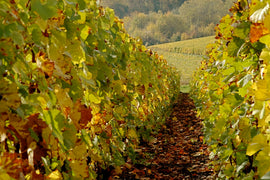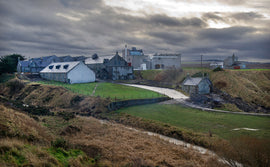LE MARCHE
As the least heralded region in a North Central Italian triumvirate that includes Tuscany and Umbria, Le Marche sometimes gets lost in the stampede of visitors thronging its famous neighbors. It’s also easy enough to mistake for Abruzzo, which it borders to the north; both are sandwiched between the Apennine Mountains and the Adriatic Sea, with long coastlines, lots of rustic greenery and no large, iconic cities (the biggest town, and the regional capital, is Ancona, pop. 100,000-ish.) But from the definite article on down, Le Marche is a place with specificity to spare.
Let’s start with that name: Le Marche (pronounced “leh-markeh”) is the only Italian region with a title in the plural form (the literal English translation would be “The Marches.”) The moniker dates back to 800 CE, when Holy Roman Emperor Charlemagne assumed the throne and divided his possessions into fiefdoms, each one of them entrusted to a noble Marquis. The term “marche” derives from the German word “mark”, which means “border”; hence, Le Marche started as a group of possessions delimited by a “mark.” This Germanic influence is less obvious than in Trentino-Alto-Adige say, but at least one source claims you can discern it via a local commitment to order and efficiency that contrasts sharply with “the usual perception of Italian chaos and lack of maintenance.” (I have no idea if that’s accurate; mentioning it here mainly as an excuse to debunk that pernicious and weirdly durable canard re: Mussolini making the trains run on time. He didn’t - and these days it bears repeating, in Italy and everywhere else: you don’t, under any circumstances, “gotta hand it to” fascists.)
Le Marche is also a great historical source of art and culture, the birthplace of the composer Gioacchino Rossini, the poet Gacomo Leopardi and most famously, the late Renaissance painter and architect Raffaello Sanzio, better known as Raphael. In fact, the story of just how Rapheal came to grow up in the region is an excellent synecdoche for its layered treasures so, if you’ll indulge a[nother] digression, let’s take a day trip to Urbino, the town where the painter was born. Today it is the hilltop home of some 24,000 inhabitants, most of whom are students at the local university; when Rapheal was born it was an unlikely Renaissance center due to the efforts of Federico the Duke of Monteferalto, who had hired the painter’s father Giovanni Santil, as his court artist. The out-of-wedlock son of a small-town noble, Frederico became a duke by killing the apparent heir, his half-brother and went on to get rich as a soldier-for-hire with his own private army, fighting for Florence against the pope, then for the pope against Florence. In the process, he lost an eye and a hunk of his nose, and consequently is portrayed only in profile — with his (relatively) good side showing. He also expanded his duchy into an Italian power, before settling down to life as a scholar and gentleman, studying Latin, collecting manuscripts, and renovating the local Ducal Palace, aiming to make it the "dwelling place of the Muses," and bringing the Renaissance to this relatively remote destination 50 years after it flourished in Florence.
Turn over another stone in Le Marche and who knows what you’ll find. Get thirsty and there’s a number of variegated terroirs extremely well-suited to the cultivation of vines. Due to the influences of the Apennines, the Adriatic, and the region’s rivers, there are various microclimates, giving wine producers both warm and cool viticultural zones to work with. Currently there are 15 DOC and DOCG classified wines, the best known of which is the white wine Verdicchio dei Castelli di Jesi. Our selection this month is an outstanding example from a great Santa Barbara winery.
The red is a little more unusual. Red wines from Le Marche are chiefly based on Sangiovese or Montepulciano, but since we’ve sampled both varietals recently, we are instead going with the rare Lacrima, which means “tear” in Italian, and is so named for either its tear-like shape, or its thin skin that allows tear-like drops of juice to drip from the grape. It is found almost exclusively in the Lacrima Morro D’Alba DOC in Le Marche, and actually made by the same enologo as the Verdicchio, a fact of which I was unaware (they are completely different labels, from different distributors) until this very moment. Stefano Atonucci, take a bow.
|
Santa Barbara Verdicchio Le Vaglie dei Castelli 2021 |
|
|
Region: Castelli di Jesi, Marche Italy |
About the Winery: Stefano Antonucci’s dynamic and candid personality is captivating. This irresistible drive and energy is also what led him, in 1994, to make the drastic decision to change his life direction and return to the small village of his childhood, Barbara, in the heart of the Marche region, giving up his job as a banker. Stefano had always been intrigued by the world of wine and also deeply connected to his territory and so, he began the transformation of his family’s small cooperative winery into the Santa Barbara Winery of today, a reference point for exceptional quality in the Marche. The vineyards are 25-40 years old and encompass an area of about 45 hectares, from the rolling hills of Barbara, across Serra de’ Conti, Montecarotto, and Arcevia up to Morro d’Alba and Cupramontana. The particularity of these areas lies in the soils, water-rich clay with some calcareous and gravelly areas, occupying a strip of land bordered by the Adriatic Sea to the east and the Apennines to the west. Work in the vineyards is carried out by hand under the attentive guidance of expert farmers, seeking a balance between cordon spur pruning, focused interventions, and thinning only when necessary. About the Winemaking: The vineyard is located 250-260 meters above sea level. Sandy tuff soils with northeastern and southeastern exposure. Vine age range between 25-40 years old.Hand harvested. Fermentation in stainless steel tanks, followed by several months in stainless steel before bottling. Tasting Notes: Bright pale yellow with a slight tinge of gold. Intense and persistent, exhales floral scents, with citrus fruit and fresh almonds. Fresh and smooth, persistent finish redolent of almonds. |
|
Winemaker: Stefano Atonucci |
|
|
Price per bottle / per case $22.99/$248.30 |
|
|
Suggested Food Pairing: Perfect with fish, oysters, pork and white meats or as an Aperitivo Ancona style Brodetto (see recipe) Spaghetti alle vongole |
|
Colleleva Lacrima Di Morro D'Alba 2021 |
|
|
Region: Lacrima Di Morro D’Alba DOC, Le Marche, Italy |
About the Winery: The vineyards of Colleleva (Colle “hill”, and si Leva, “rises”) lie on the heights of the Marche: about halfway between the Apennine mountains and the coastline of the Adriatic Sea. The combination of eastern sun exposure and the cooling winds from the Adriatic provide an optimal microclimate for balancing ripeness with fresh acidity in the grapes. The rare Lacrima di Morro d’Alba grape is presumably named for the teardrop-like shape of its berries, but the only sad aspect to the varietal is that it almost went extinct until the 1980s, when a handful of local vignaioli revived it. This grape, however, produces not a brooding wine but a highly aromatic rosso that is all about pleasure, especially in the hands of Colleleva’s Stefano Antonucci. About the Winemaking: Clay soil. From 30-40 year old vines. Fermented 15 days in stainless steel. Daily punchdowns and pumpovers Aged 8 months in stainless steel Aged 1 month in bottle before release Tasting Notes: Lush aromas of herbaceous lavender and wild roses presage a palate of vivid red and black berry fruit, smooth tannins and a savory, slightly feral finish. Can serve slightly chilled. |
|
Winemaker: Stefano Antonnuci |
|
|
Price per bottle / per case: $25.99/$280.70 |
|
|
Suggested Food Pairing: Arugula, prosciutto and mozzarella pizza Braised pork belly Pasta al pesto Ancona style Brodetto (see recipe) |
|
Ancona Style Brodetto (Fish Stew)
Brodetto, a fish stew with a tomato base, is a specialty of Le Marche. There are several recipes for brodetto, even within the region. This recipe belongs to the province of Ancona and serves 6. Feel free to use whatever seafood you have on hand, or is fresh at the market.
Instructions:
1. Heat the olive oil in a large saucepan, Dutch oven, or preferably a clay pot over medium heat. Add the onion, garlic, carrot, celery, bay leaves, parsley, and red pepper flakes. Cook and stir until the onion has softened and turned translucent, about 5 minutes.2. Stir in the mashed tomatoes and cook for 15 minutes over medium heat. Add the fish. Pour in the vinegar or wine. Cook until the liquid has almost evaporated, about 10 minutes; pour in the fish stock. Cover, reduce the heat to low, and simmer for 10 minutes.
3. Gently mix in the clams. Cook until clams have opened (discard any that don't open) about 2 minutes. Stir in the shrimp. Cook until the shrimp are pink, about 3 minutes.
4. Place a slice of toasted bread in the bottom of each bowl. Ladle brodetto over the bread and serve immediately.
Notes
You can use 2 1/2 to 3 pounds of any mixed fish--swordfish, squid, red snapper, shrimp, clams, mussels, and lobster. Clean the clams and mussels well and put them into the stew whole. If making brodetto for a large group, you can cook a whole lobster in the stew, then remove the meat from the tail, chop it, and put it in the stew, and use the remaining lobster shell on top for presentation. Some versions of brodetto use saffron instead of red pepper flakes and white wine instead of vinegar. You can substitute rice for the bread, as well.





